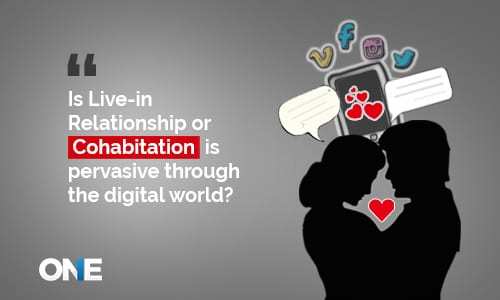Living–in relationships or cohabitation is not a new norm these days. But over the years since technology has made its way to the next level in terms of cell phones and internet, the cohabitation is pervasive especially among the people in their late teens or in their twenties. The norm of approaching someone to have live –in the relationship has become a hundred times easier than ever before.
The social messaging apps, dating apps, cellular networks of smartphones and other digital devices connected to the internet these days are grooming even tweens these days to have someone in a relationship on the digital world.
So, cohabitation or live–in relationships is on the rise among modern society, youngsters are at the top to choose these sort of relationships with the use of the digital world. Therefore, shifting gender roles and high expectations, delay to get married culture are leading people to have firm belief moving together before tying the knot.
Most of American adults think live – in relation is good idea before tying the knots. Almost two third of adults (65%) strongly endorse cohabitation is good idea before getting married, as compared to 35% that oppose this school of thought
According to Michigan News
Michigan News reports says that there are three major reasons to have a live–in relationship or to cohabit: want to spend more time with the partner, to share financial burdens, and to know about the real compatibility before getting married. However, these days young teens are using virtual world to approach someone online and then meet them into real–life to cohabit or get involved in live–in relationship to seek sexual needs.
Why Does Female want have live–in relationship
Today, females among young teens say “Love” as a genuine reason to live together three times more than men did.
Why does Male want to cohabit?
They cited “sex” as the major reason to live together four times more than a female did
Male and female both think to have live –in relationship as a temporary relationship to know about the compatibility, but the real difference comes when underlying goals of living to gather. Moreover, since the technology comes forward in terms of instant messaging apps and dating apps like Tinder both male and female want to have blind dates to fulfill sexual motives rather than to check compatibility. It means stalking among teens and young adults are on the rise no matter if they just label at as cohabitation or live–in relationship.
According to PEW Research Center
- US adults cohabiting with the partner is on the rise & 7% American adults cohabiting in 2016
- American adults living with an unmarried partner reached about 18 million
- Young adults in live –in relationship are 29% in 2007
- Half of the adults in live –in relationship are less than age of 35
- Cohabiting is on the rise with sheer pace among 50 and older
- Generation Zers, millennial, Generation Xers and Baby Boomers believes in live –in relationship
- 41% oppose live–in relationships
- Social media apps and internet is the biggest reason behind blind dating and living relationships
70% of the adults being in live –in relationships use internet in U.S and use social media platforms including Facebook. 75% of them claim to login regularly several times. Some says, with the use of Facebook they have met with their partner
Is Live–in relationship or Cohabiting dangerous for hour family lives?
According to the report released by the National Marriage Project, the live-in relationship is the major threat to American kids and teens because eclipsing divorce and overshadowing single motherhood. It is more than just an issue for the low –income families that more likely to have unmarried parents, according to study’s authors, led by the University of Virginia’s Brad Wilcox. The author further stated that kids are being exposed to cohabitation such as tweens and teens that have access to social media.

So, ultimately, when they have an example of their cohobated parents they are more likely to adopt live–in relationships using dating apps, social media, and internet using cell phone devices connected to the internet.
Moreover, young tweens and teens get started to have someone to be in live–in a relationship that could be a stalker or sexual predator. The children born from unmarried parents usually safer with emotional problems, less involved and less loving fathers, risk of school failure, high risk of infant mortality and less physical health compared to the married parents.
Moreover, the ratio of single moms that needs to work for the bread and butter won’t be able to do effective parenting. However, these days digital parenting has become a norm for single mother and father to protect children from all kinds of dangers.
Cohabitation or live –in relationship cannot be alternate of marriage, “study says. Wilcox said at an event at the Institute of American Values where he discussed a study “cohabitation and kids don’t mix
Risks Associated with Cohabitation or Live–in Relationships
74% Cohabiters compare to 56% that are married more likely to have sexual intercourse before the age of 18. It means, teens whose parents had in live–in relationships can harbor sexual fantasies and can also get involved in uncommitted sexual activities before getting an adult.
Furthermore, Cohabiting females may lead to unwanted pregnancy and that is 43.3 compared to the married women that are 23.9%. These types of risk factors are already prevailing in the society.
On the other hand with such a huge impact of co
habiting on young people may lead them towards sexting, rape, bullying online, stalking with the rise and the rise of cell phone technology and internet.
Those who believe in live –in relationship or Cohabiting and then decide to get married report says the low average marital quality and more like to end up with divorce. In addition, young generations being raised by unmarried parents are more likely to get closer to cyber threats than ever before and digital parenting has left the only solution.







